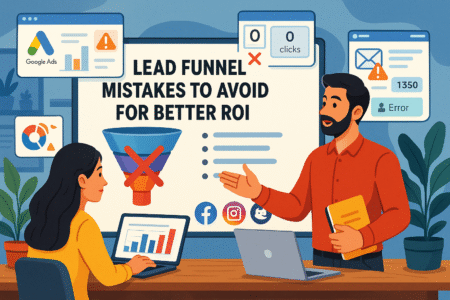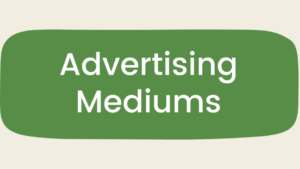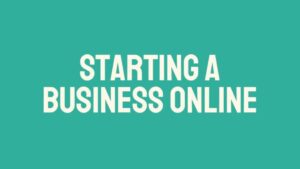Table of Contents
Start a blog with a niche focus to provide high quality information and capture your target audience’s attention. Niche blogs excel by addressing specific interests, offering depth and expertise.
This guide will help you navigate the essentials of niche blogging, ensuring your content stands out and delivers genuine value.
Crafting Your Blog’s Unique Niche Identity
Creating a unique niche identity for your blog is essential for standing out in the crowded online space. Start a blog with a niche focus to ensure you capture a dedicated audience. This approach allows you to deliver content that meets specific needs, fostering loyalty and engagement among your readers.
To craft a compelling niche identity, you need to blend your passion, expertise, and market demand. It’s about finding the sweet spot where your interests align with what your audience is searching for. This combination will help you create valuable content that resonates with your readers and keeps them coming back for more.
Identifying Your Passion and Expertise
Start by reflecting on your interests and skills. I recommend you to list down the topics you are passionate about and have expertise in. This will help you maintain enthusiasm and consistency in your blogging journey. When you write about what you love, it shows in your content, making it more engaging and authentic.
Next, my suggestion is to evaluate your professional background and hobbies. Consider areas where you can offer unique insights and advice. I believe your readers will appreciate the depth of knowledge and personal touch you bring to your blog. Remember, the more specific and passionate you are about your niche, the better.
Finally, I advise you to think about long-term sustainability. Choose a niche that you can write about extensively and won’t lose interest in. This ensures that you can keep producing high-quality content over time, which is crucial for growing and maintaining your audience.
Researching Market Demand and Competition
Understanding market demand and competition is crucial for success. I recommend you to use tools like Buzzsumo and keyword planners to identify popular topics within your niche. This research will help you understand what your potential audience is searching for and how you can meet those needs.
Next, I advise you to analyze your competition. Look at other blogs in your niche and see what they’re doing well and where they fall short. My suggestion is to find gaps in their content that you can fill with your unique perspective. This strategy helps you stand out and attract readers who are looking for something different.
Additionally, I point out the importance of differentiating yourself. Even if the market seems saturated, there’s always room for a unique voice. I strongly believe that by offering a fresh take or focusing on a specific sub-niche, you can carve out your own space in the blogging world.
Finally, my recommendation is to keep an eye on trends and changes in your niche. Staying updated with the latest developments allows you to provide timely and relevant content, keeping your blog ahead of the curve and your audience engaged.
Defining Your Target Audience
Knowing your target audience is essential for creating content that resonates. I advise you to create detailed audience personas that include demographics, interests, and pain points. This helps you tailor your content to their specific needs and preferences.
Next, my suggestion is to engage with your audience directly. Use social media, surveys, and comments to gather feedback and understand what they want from your blog. I believe this direct interaction will give you valuable insights and foster a loyal community around your blog.
Additionally, I recommend you to analyze your audience’s behavior using analytics tools. This data will show you which topics and formats perform best, allowing you to optimize your content strategy accordingly. My advice is to focus on what works and continuously improve based on your findings.
Finally, I point out the importance of empathy. Put yourself in your audience’s shoes and think about what kind of content would help them the most. I strongly believe that by genuinely caring about your readers and providing high-quality information, you can build a successful blog that stands out in your niche.
Developing a Content Strategy for Your Niche Blog
Start a blog with a niche focus by developing a solid content strategy. This will ensure your blog consistently delivers high-quality information that resonates with your audience. A well-planned content strategy helps maintain consistency, keeps your readers engaged, and positions your blog as a reliable source of valuable insights.
My advice is to start by setting clear goals for your blog. Whether it’s increasing traffic, boosting engagement, or establishing authority in your niche, having specific objectives will guide your content creation process. This clarity will help you stay focused and measure your success effectively.
Planning Your Content Calendar
I strongly believe that a content calendar is essential for staying organized and consistent. My suggestion is to plan your content at least a month in advance. This allows you to strategically schedule posts around key dates and events relevant to your niche, ensuring timely and relevant content.
Additionally, I recommend you to include a mix of content types in your calendar. Balance long-form articles, short blog posts, videos, and infographics to keep your audience engaged. Variety keeps your blog interesting and caters to different reader preferences, enhancing overall user experience.
My advice is to remain flexible with your content calendar. While planning is crucial, being adaptable to current trends and audience feedback ensures your content remains relevant. This balance between structure and flexibility is key to a successful content strategy.
I point out the importance of tracking your progress. Regularly review your content calendar to see what’s working and what’s not. This continuous evaluation helps you refine your strategy and keep improving your blog’s performance.
Creating Valuable and Engaging Content
I recommend you to focus on quality over quantity when creating content. It’s more effective to publish fewer, high-quality posts than to flood your blog with mediocre content. Readers appreciate well-researched, thoughtful articles that provide real value and insights.
Next, I advise you to use storytelling to make your content more engaging. Sharing personal experiences and anecdotes related to your niche can make your posts more relatable and interesting. This personal touch helps build a connection with your audience, encouraging them to keep coming back.
I would say it’s crucial to include actionable advice in your content. Practical tips and step-by-step guides are highly valued by readers, as they provide immediate benefits and solutions to their problems. This approach enhances your blog’s utility and credibility.
My recommendation is to always keep your audience in mind when creating content. Think about their needs, preferences, and pain points. By addressing these effectively, you ensure your content is not only engaging but also highly relevant and useful.
Utilizing SEO Best Practices
To start a blog with a niche focus and reach a wider audience, utilizing SEO best practices is essential. I advise you to conduct thorough keyword research to identify the terms your target audience is searching for. This will help you create content that ranks well on search engines.
Next, my suggestion is to optimize your blog posts with relevant keywords. However, avoid keyword stuffing. Instead, use keywords naturally within your content, titles, and meta descriptions. This approach improves your search rankings without compromising readability.
I believe internal linking is a powerful SEO tactic. By linking to other relevant posts on your blog, you help readers discover more content and keep them engaged longer. This also helps search engines understand the structure and relevance of your content.
Finally, I point out the importance of mobile optimization. Ensure your blog is mobile-friendly, as a significant portion of your audience will access your content via smartphones and tablets. A responsive design enhances user experience and improves your search engine rankings.
Building and Growing Your Blog’s Audience
To start a blog with a niche focus, building and growing your audience is crucial. A dedicated audience ensures your content reaches the right people and creates a loyal community around your blog. Effective audience growth strategies will help you increase traffic, engagement, and overall blog success.
Most importantly, I recommend you to be consistent with your content posting schedule. Regular updates keep your audience engaged and coming back for more. Consistency helps establish your blog as a reliable source of high-quality information in your niche.
Leveraging Social Media Platforms
I advise you to leverage social media platforms to promote your blog and reach a wider audience. My suggestion is to choose platforms where your target audience is most active. For instance, if you start a blog with a niche focus on visual content, platforms like Instagram and Pinterest might be more effective.
Next, I recommend you to create engaging and shareable content tailored for each platform. For example, use eye-catching images and short, compelling captions on Instagram. I believe this approach will help you attract more followers and drive traffic to your blog.
My advice is to actively engage with your audience on social media. Respond to comments, participate in discussions, and share valuable content regularly. This interaction helps build a strong relationship with your followers, encouraging them to visit your blog.
I suggest using social media analytics to track your performance. This data will show you which posts are driving the most traffic and engagement, allowing you to refine your strategy and focus on what works best.
Engaging with Your Community
Engaging with your community is essential for building a loyal audience. I would say it’s important to create a welcoming and interactive environment on your blog. Encourage readers to leave comments and share their thoughts on your posts. This engagement fosters a sense of community and keeps readers coming back.
Next, I recommend you to organize events like Q&A sessions, webinars, or live chats. These events provide valuable interaction opportunities and help you connect with your audience on a deeper level. I strongly believe that such personal engagement can significantly boost reader loyalty.
I suggest you to feature user-generated content on your blog. Sharing stories, testimonials, or guest posts from your readers makes them feel valued and appreciated. This approach not only enriches your content but also strengthens the bond with your community.
Additionally, my recommendation is to use email newsletters to stay in touch with your audience. Regularly updating subscribers with your latest posts, news, and exclusive content keeps them engaged and encourages repeat visits to your blog.
Collaborating with Influencers and Guest Bloggers
Collaborating with influencers and guest bloggers is a powerful strategy to grow your audience. I advise you to identify influencers in your niche who have a significant following and align with your blog’s values. Partnering with them can introduce your blog to a broader audience.
Next, my suggestion is to invite guest bloggers to contribute to your blog. This not only diversifies your content but also attracts their followers to your site. I think this collaborative approach can boost your blog’s visibility and credibility.
I recommend you to engage in guest posting on other blogs. Writing high-quality guest posts for reputable blogs in your niche can drive traffic back to your own blog. It’s an excellent way to showcase your expertise and reach new readers.
Finally, I point out the importance of building long-term relationships with your collaborators. Regularly interacting and working with influencers and guest bloggers can lead to ongoing partnerships that continually benefit both parties and help sustain audience growth.
Monetizing Your Niche Blog Effectively
To start a blog with a niche focus, it’s essential to monetize effectively to sustain your efforts and generate income. Monetizing your blog involves various strategies that can turn your passion into a profitable venture. By focusing on your niche, you can attract targeted advertisers and partners interested in your specific audience.
I strongly believe that understanding your audience’s needs and preferences is key to successful monetization. My suggestion is to diversify your income streams to ensure a stable revenue flow. This approach helps mitigate risks and maximizes your earning potential.
Exploring Affiliate Marketing Opportunities
I advise you to explore affiliate marketing as a primary monetization method. By promoting products or services relevant to your niche, you can earn commissions on sales generated through your referral links. I recommend you to choose affiliate programs that align with your blog’s content and audience interests.
Next, my advice is to create high-quality, informative content that naturally incorporates affiliate links. This includes product reviews, comparison articles, and tutorials. I suggest focusing on providing genuine value to your readers while subtly promoting affiliate products.
I believe transparency is crucial in affiliate marketing. Clearly disclose your affiliate relationships to your audience to build trust and maintain credibility. This honesty fosters a loyal readership and increases the likelihood of conversions.
Finally, my recommendation is to track and analyze your affiliate marketing performance regularly. Use analytics tools to monitor which links are generating the most revenue and adjust your strategy accordingly. This continuous optimization will help you maximize your affiliate earnings.
Offering Premium Content and Services
My suggestion is to offer premium content and services to your audience. This can include exclusive articles, in-depth guides, or access to members-only sections of your blog. Providing valuable, exclusive content can encourage your readers to pay for a subscription or one-time access.
Next, I recommend you to consider creating and selling digital products such as eBooks, online courses, or webinars. These products allow you to share your expertise in a structured format and provide additional value to your audience. I think this approach can generate significant income while establishing you as an authority in your niche.
I advise you to offer personalized services like consulting, coaching, or freelance work. These services can be tailored to your niche and provide a higher income potential. By leveraging your expertise, you can help your audience achieve their goals while monetizing your blog effectively.
My advice is to promote your premium content and services through your blog and social media channels. Highlight the benefits and value of what you’re offering to encourage your audience to make a purchase. This targeted promotion will help you convert regular readers into paying customers.
Utilizing Advertising Networks
I suggest utilizing advertising networks to monetize your niche blog. These networks, such as Monetag, allow you to display ads on your blog and earn revenue based on impressions or clicks. I recommend you to choose ad networks that offer relevant and high-quality ads that align with your niche.
Next, I would say it’s important to strategically place ads on your blog to ensure they don’t disrupt the user experience. My advice is to place ads in locations where they are visible but not intrusive, such as within the content, sidebar, or header. This balance helps maintain a positive reader experience while generating ad revenue.
I point out that optimizing your ad placements and formats can significantly impact your earnings. Experiment with different ad sizes, types, and positions to find what works best for your blog. Continuous testing and optimization are crucial for maximizing ad revenue.
Finally, I strongly believe in diversifying your ad income by joining multiple ad networks or selling ad space directly to relevant businesses. This approach provides a stable and potentially higher income stream. By leveraging your niche audience, you can attract advertisers willing to pay a premium for targeted exposure.
Measuring Success and Optimizing Performance
To start a blog with a niche focus, it’s essential to measure success and optimize performance regularly. By analyzing key metrics, you can understand what works and what doesn’t, allowing you to refine your strategy. This continuous improvement ensures your blog remains relevant and engaging to your audience.
I recommend you to set clear, measurable goals for your blog. Whether it’s increasing traffic, boosting engagement, or improving conversion rates, having specific targets helps you track progress and stay motivated. This approach provides a clear direction and allows for better performance evaluation.
Analyzing Traffic and Engagement Metrics
I advise you to use tools like Hotjar to monitor your blog’s traffic and engagement metrics. Key metrics to focus on include page views, bounce rate, and average session duration. These indicators provide insights into how well your content resonates with your audience.
My suggestion is to pay attention to user behavior on your blog. Look at which pages are most popular and where visitors spend the most time. This data helps you understand your audience’s preferences and interests, enabling you to create more targeted and effective content.
I believe it’s important to track engagement metrics such as comments, shares, and likes. High engagement indicates that your content is valuable and resonates with readers. Encouraging interactions can foster a sense of community and increase reader loyalty.
Additionally, I recommend you to monitor conversion rates for specific actions, such as newsletter sign-ups or product purchases. This helps you assess the effectiveness of your calls to action and identify areas for improvement. Optimizing these elements can significantly boost your blog’s performance.
Adjusting Your Strategy Based on Data
I would say it’s crucial to adjust your content strategy based on the data you collect. If certain topics or formats perform better, focus more on those areas. My advice is to remain flexible and open to change, as the blogging landscape is constantly evolving.
Next, I suggest conducting A/B testing to compare different versions of your content or layout. This helps identify which elements drive better results and allows you to make data-driven decisions. Continuous testing and optimization are key to maintaining a successful blog.
I point out the importance of staying updated with SEO best practices. Regularly reviewing and adjusting your SEO strategy ensures your content remains visible and ranks well on search engines. This involves optimizing keywords, meta descriptions, and backlinks.
Finally, I recommend you to seek feedback from your audience. Use surveys, polls, or direct comments to gather insights into what your readers like and what they want more of. Incorporating this feedback into your strategy helps you create content that truly meets their needs.
Continuously Improving Content Quality
My advice is to focus on continuously improving the quality of your content. Regularly updating old posts with new information and better visuals can enhance their value and relevance. This keeps your blog fresh and engaging for both new and returning visitors.
I believe investing in professional tools and resources can elevate your content quality. This might include graphic design software, editing tools, or online courses. Improving your skills and tools ensures you produce high-quality content consistently.
I suggest collaborating with experts or guest bloggers to bring diverse perspectives to your blog. This not only enriches your content but also attracts new readers. Guest posts can introduce fresh ideas and expertise that benefit your audience.
Lastly, I strongly believe in the power of storytelling. Engaging narratives make your content more relatable and memorable. By sharing personal experiences and anecdotes, you can connect with your audience on a deeper level and keep them coming back for more.
Staying Motivated and Avoiding Burnout
To start a blog with a niche focus, staying motivated and avoiding burnout is essential for long-term success. Blogging can be demanding, so finding ways to keep your enthusiasm high is crucial. By managing your workload and maintaining a healthy work-life balance, you can sustain your passion for blogging.
I recommend you to set realistic goals and celebrate small milestones. Achieving these targets provides a sense of accomplishment and keeps you motivated. Breaking down larger tasks into manageable steps makes the process less overwhelming and more rewarding.
Setting Realistic Goals and Milestones
My advice is to set SMART goals (Specific, Measurable, Achievable, Relevant, Time-bound) for your blog. These clear and realistic objectives help you stay focused and track progress effectively. I suggest celebrating each milestone, no matter how small, to maintain motivation and momentum.
I think it’s important to have both short-term and long-term goals. Short-term goals keep you on track and provide quick wins, while long-term goals give you a vision for the future. This balance ensures steady progress and sustained motivation.
Next, I recommend reviewing your goals regularly and adjusting them as needed. This flexibility allows you to adapt to changes and stay relevant. My advice is to be kind to yourself and acknowledge that it’s okay to adjust your goals based on circumstances.
Lastly, I strongly believe in the power of visualization. Creating a vision board or writing down your goals can keep you motivated and focused. Seeing your goals regularly reminds you of your purpose and keeps you driven to achieve them.
Finding Inspiration and Staying Creative
I suggest seeking inspiration from various sources to keep your creativity flowing. Read books, follow other bloggers, attend webinars, and engage with your audience. I believe exposing yourself to different ideas and perspectives can spark new content ideas and keep your blog fresh.
My recommendation is to take breaks and allow yourself time to recharge. Overworking can lead to burnout, so it’s important to rest and rejuvenate. Taking a walk, meditating, or pursuing hobbies can help clear your mind and boost creativity.
I advise you to keep a content idea journal. Whenever inspiration strikes, jot down your thoughts. This habit ensures you always have a pool of ideas to draw from when planning your content calendar. It also helps prevent writer’s block and keeps your content pipeline full.
I think collaborating with other creatives can also fuel inspiration. Working with guest bloggers, influencers, or even friends can bring fresh perspectives and new ideas. These collaborations can enrich your content and keep your blog dynamic and engaging.
Balancing Blogging with Other Responsibilities
I point out the importance of time management in balancing blogging with other responsibilities. My suggestion is to create a schedule that allocates specific times for blogging, work, and personal activities. This structured approach helps you stay organized and productive.
Next, I recommend prioritizing tasks based on urgency and importance. Use tools like to-do lists or project management software to keep track of your responsibilities. This prioritization ensures you focus on what matters most and avoid feeling overwhelmed.
I believe delegating tasks can also help manage your workload. If possible, outsource certain aspects of your blog, such as graphic design or editing. This allows you to focus on creating content and managing your blog effectively.
Finally, I advise you to maintain a healthy work-life balance. Make time for family, friends, and self-care activities. This balance prevents burnout and keeps you motivated. I strongly believe that a well-rounded life enhances your creativity and productivity, ultimately benefiting your blog.






